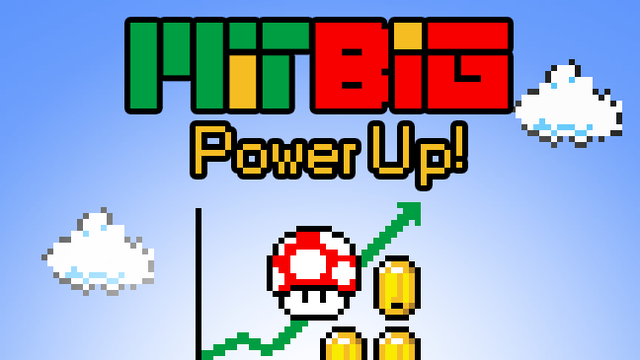Funding Game Projects: Notes from the MIT Business in Gaming Conference
The following post was written by Eduardo Marisca, CMS Graduate Student.
 The MIT Business in Gaming (BiG) conference took place here at the MIT campus a few weeks ago, organized by the MIT Sloan Business in Gaming Club. It was a pretty interesting event not without its share of controversial statements, as one could expect from a gathering of people discussing what the future of the gaming industry is going to look like.
The MIT Business in Gaming (BiG) conference took place here at the MIT campus a few weeks ago, organized by the MIT Sloan Business in Gaming Club. It was a pretty interesting event not without its share of controversial statements, as one could expect from a gathering of people discussing what the future of the gaming industry is going to look like.
While there were many trends and patterns discussed throughout the day, one of the most interesting discussions came about early in the day regarding models for funding game companies and game projects. This is a brief recap of the ideas shared during the panel, which certainly deserve some more discussion and commentary.
The opening panel on funding models for games drew quite a lot of attention from a room packed with up and coming developers scouting for the right model for their projects. The panel included a breadth of diverse experiences including Dave Bisceglia from The Tap Lab, Seth Alte from Subaltern Games, Nabeel Hyatt from Spark Capital and Cindy Au from Kickstarter. The different perspectives led to a good debate around what the best model is from someone thinking about starting a game project or a game company and what their various options are depending on their goals and the level of maturity of their project.
One of the most helpful distinctions the panel shared was that getting funding for a game involved very different strategies and resources than trying to get funding for a game company. With all the attention crowdfunding platforms such as Kickstarter have been getting lately, it is becoming more and more attractive as an option for beginning game designers, but while Kickstarter can be very effective when you have a specific product you’re interested in building – a game – it is not as helpful when you’re thinking about something different. The crowdfunding model has not been as effective for people trying to get funding for a company, a gaming platform or a series of games, rather than a single title, and other models of funding such as angel investors or venture capital (when not bootstrapping the entire project) might be better suited to such larger endeavors. This, however, is not necessarily an either/or proposition: it is now more and more the case that developers interested in going beyond their original projects can bank on successful Kickstarter campaigns as a measure of both the interest their projects are able to generate; and evidence of their capacity to not only build games, but of bringing together communities around them willing to contribute funding. Initial success with crowdfunding can then become helpful when thinking about taking an operation to scale and going after other sources of capital.
Crowdfunding is not a model that fits everyone, though – the success of a crowdfunding campaign must necessarily look beyond the “if you build it, they will come” syndrome that assumes that a nice project will draw attention by itself. It won’t. Platforms such as Kickstarter are more than just about funding: they’re an opportunity to engage in conversations with potential communities, to build an audience and get attention even before a product is complete, and to a large extent, to experiment with various engagement models and find the right fit for the project. Not all communities react the same way to the same interactions. But this experimentation takes time away from the development effort and can often go overlooked and unattended for people heavily focused on their projects. It then becomes a challenge for people working independently to strike a balance between building their game and building the community of support they need to get the funding they need to complete it, and the attention they’ll later need to distribute it.
For those banking their success on these platforms, however, it is wise to remember that maintaining their “indie cred” becomes incredibly important. People investing in projects over Kickstarter are looking for that personal, community connection, and a feeling of involvement in the project. Being very polite and attentive all the time becomes the baseline from which designers can grow healthy communities of support.
An interesting challenge for game companies seeking an ongoing investment model is that while a web startup can demo and even commercialize and incomplete app over which they can later iterate and improve, this is often not the case with games, which will usually have a harder time building revenue if the game is incomplete. In other words, it’s harder for a game to make money while being built, making them a somewhat harder sell to potential investors. There are, however, some mechanisms people are experimenting around this, using for example episodic releases whenever possible, or expansions as downloadable content, which enable a company to market an early version of the game and start collecting revenue early in the process while the remainder of the game is built.
